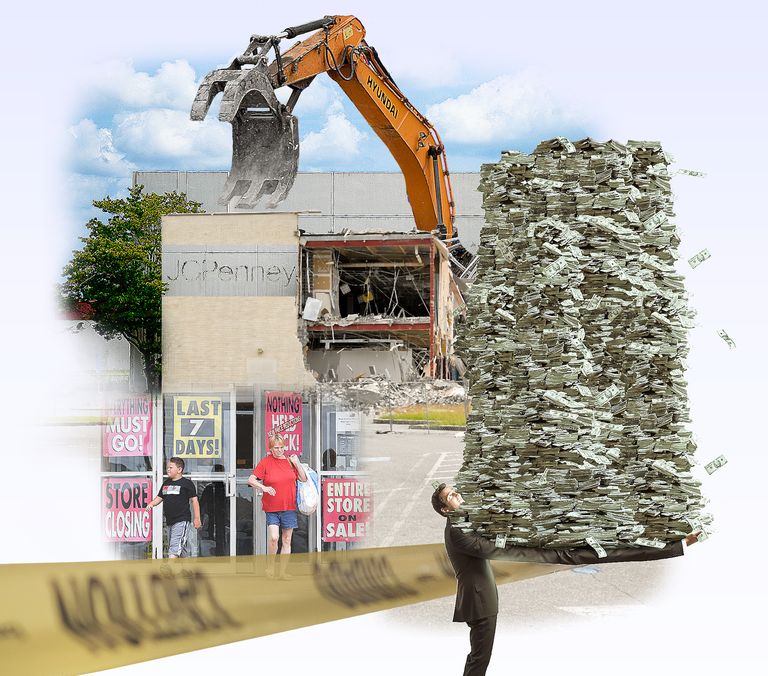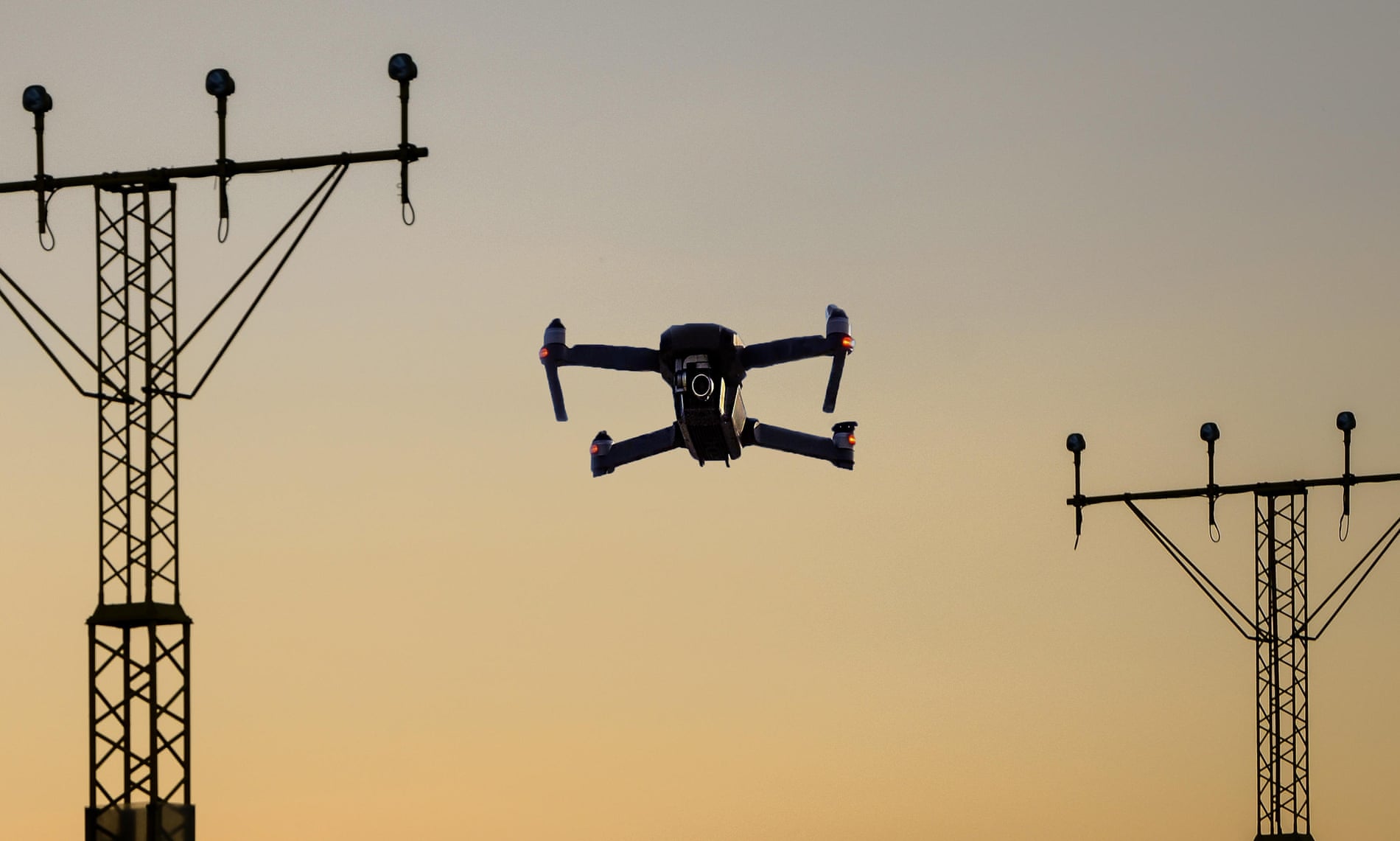Catie McKee, Dan McNamara, and their boss Marc Rosenthal had millions of dollars riding on Crystal Mall in Waterford, Connecticut. The trio worked at MP Securitized Credit Partners, a tiny Wall Street hedge fund, and they’d stopped by the typical middle class shopping center in search of signs of life: Who was at JCPenney? Claire’s? Hot Topic? ThriftBois? What was up at VAPE CITY or BrowArt23? They couldn’t help but notice there was something depressing about the place: discounts galore, emptiness in every direction, a foreboding aura that signaled the end was near. It didn’t look good for anyone hoping for the mall’s success. But Rosenthal, McKee, and McNamara weren’t betting on Crystal Mall thriving—they were betting on it failing, and spectacularly.
It was October 2019. The threesome was in the business of betting against—or “shorting,” in financial jargon—commercial mortgage bonds, specifically those heavily weighted with debt issued to shopping malls. A year prior, in 2018, the team made a $2 billion bet that a series of shopping malls, including Crystal Mall, would eventually fail. If retail tenants vacated and the malls’ landlords defaulted on their mortgages, MP stood to make a killing. They had taken many trips like the one to Crystal Mall over the past two years: this downtrodden mall after that one, seeing firsthand the shopping centers, once the heart of the American retail sector that, they were certain, would soon be underwater.
It was a proposition which, in the age of Amazon, couldn’t possibly be considered risky on its face, but in the minds of traders on Wall Street, the threesome was taking a contrarian view: The conventional wisdom stood to reason that the debt propping up these shopping centers was stable, at least for now, whereas the team at MP was convinced that the malls’ landlords would default on their mortgages by 2022—and, most importantly, that if they didn’t have their bet placed now, they’d miss the chance at a huge payday.
After a long morning casing the storefronts, the team headed down the street to Olive Garden for a late lunch. The past ten months had proved to be near-fatal for their firm. A year into their trade, they hadn’t yet made a profit—in fact, they were losing millions of dollars every month. By the time McKee and McNamara took their boss to Crystal Mall, investors had pulled out of their fund, the small team was struggling to source more financing, and they even found themselves in a war over their trade with two big Wall Street investment firms. Although locked in a battle akin to David versus Goliath, Rosenthal’s excitement was palpable. It was his first mall tour, and to see the struggling center first-hand reinvigorated the kind of macabre confidence that accompanies any short bet. “He was like a little kid in a candy store,” McNamara remembered. Rosenthal told his employees that he wanted to drive deeper into Connecticut, to check out another struggling mall. He pulled out his phone. “It’s only an hour away,” Rosenthal said, pointing to his screen. “Let’s go!” It was late afternoon on a Friday, so McKee and McNamara convinced their boss to save it for another day. The team finished eating and drove back to Manhattan, their conviction cemented that they were on the right side of the trade.
Read the rest of this article at: Esquire
At the very beginning of her new book Seven and a Half Lessons About the Brain, psychology professor Lisa Feldman Barrett writes that each chapter will present “a few compelling scientific nuggets about your brain and considers what they might reveal about human nature.” Though it’s an accurate description of what follows, it dramatically undersells the degree to which each lesson will enlighten and unsettle you. It’s like lifting up the hood of a car to see an engine, except that the car is you and you find an engine that doesn’t work at all like you thought it did.
For instance, consider the fourth lesson, You Brain Predicts (Almost) Everything You Do. “Neuroscientists like to say that your day-today experience is a carefully controlled hallucination, constrained by the world and your body but ultimately constructed by your brain,” writes Dr. Barrett, who is a University Distinguished Professor at Northeastern and who has research appointments at Harvard Medical School and Massachusetts General Hospital. “It’s an everyday kind of hallucination that creates all of your experiences and guides all your actions. It’s the normal way that your brain gives meaning to the sensory inputs from your body and from the world (called “sense data”), and you’re almost always unaware that it’s happening.”
Read the rest of this article at: GQ
Soon after 9pm on Wednesday 19 December 2018, an airport security officer who had just finished his shift at Gatwick airport was standing at a bus stop on site, waiting to go home, when he saw something strange. He immediately called the Gatwick control centre and reported what he had seen: two drones. One was hovering above a vehicle inside the airport complex, and the other was flying alongside the nearby perimeter fence. The message was relayed to senior management. Unauthorised drone activity is considered a danger to aircraft and passengers because of the risk of collision. Within minutes, Gatwick’s only runway had been closed and all flights were suspended.
Over the next half hour, 20 police and airport security vehicles drove around the airport, lights flashing and sirens blaring, with the intention of scaring whoever was operating the drones. It didn’t work. By 9.30pm, six more sightings had been logged by the Gatwick control centre, five of them from police officers. Inside the airport, thousands of passengers waited to set off on their Christmas holidays. In the sky above, planes circled, waiting to land. Some were at the end of long journeys, and more than a dozen aircraft were soon dangerously low on fuel.
About an hour after the first sighting, Eddie Mitchell, a news photographer, was on his way to the airport to cover the shutdown when he remembered that he had two drones in his car. Fearing that he might come under suspicion, he rang the police: “I said: ‘I’m heading to Gatwick, please don’t think it’s me!’” Mitchell is licensed by the Civil Aviation Authority (CAA) to fly drones commercially, sometimes in his capacity as a cameraman, sometimes for official bodies such as the fire brigade. But he had good reason to be cautious. Four years earlier, in December 2014, he was trying to get aerial footage of a fire close to Gatwick when police arrested him. His drone was confiscated and he was held for five hours. (He later won compensation for wrongful arrest.)
Read the rest of this article at: The Guardian
Samuel Little guided his car to a stop in a secluded area off Route 27 near Miami and cut the engine. Before long, Mary Brosley had straddled his lap. He started playing with her necklace.
He’d met her at a nearby bar, drinking away the final hours of 1970. She was a frail, vulnerable woman, about 5-foot-4 and anorexic, barely 80 pounds. The tip of her left pinkie finger was missing, sliced off in a kitchen accident, and she walked with a limp from hip surgery.
Brosley said she had left a series of lovers and two children in Massachusetts after endless confrontations about her drinking. Estranged from her family, struggling to survive, she was the kind of woman who might disappear from the face of the Earth without attracting much notice.
Little admired the way the moonlight illuminated her pale throat.
“I had desires. Strong desires to … choke her,” he would later tell police. “I just went out of control, I guess.”
By New Year’s Day 1971, Mary Brosley, 33, had become the first known victim of a man since recognized as the most prolific serial killer in U.S. history. Over more than 700 hours of videotaped interviews with police that began in May 2018, Little, now 80, has confessed to killing 93 people, virtually all of them women, in a murderous rampage that spanned 19 states and more than 30 years.
A gifted artist with an unnervingly accurate memory, Little has produced lifelike drawings of dozens of his victims. And, with the fervor of an old man recalling the exploits of his youth, he has provided police with precise details about their murders, invariably effected by strangulation.
Across the nation, police have spent more than two years using that information to reopen cold-case investigations and attempt to bring closure to families who have waited decades to learn what happened to the mother who vanished, the sister whose suspicious death was never explained.
“If Little hadn’t confessed … then none of this would have been solved,” said Angela Williamson, a Justice Department official who worked on the case. Federal investigators believe his confessions are “100 percent credible,” she said.
Read the rest of this article at: The Washington Post






